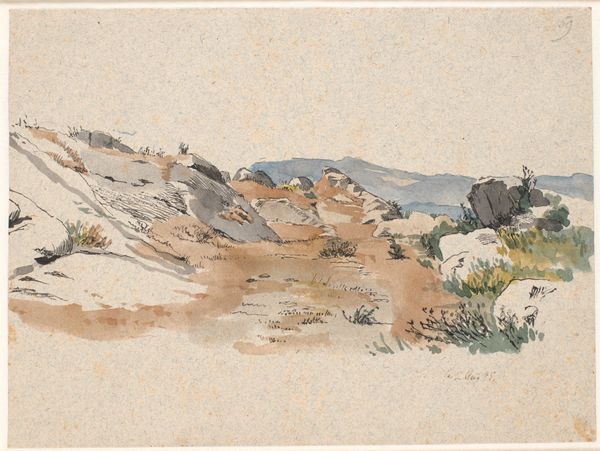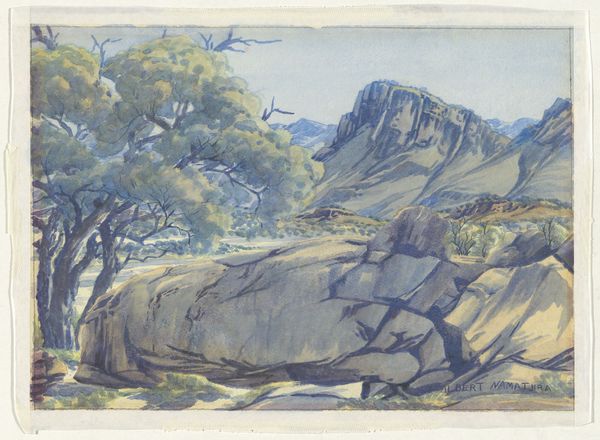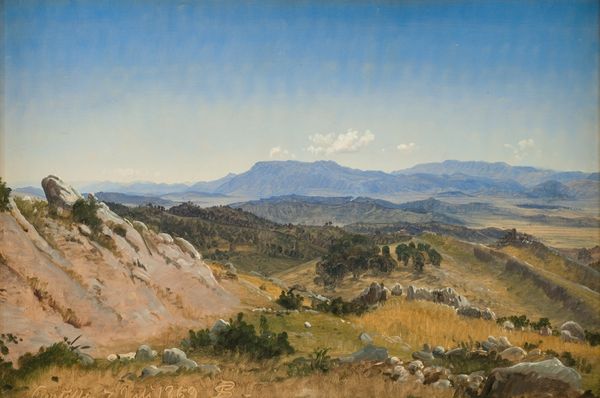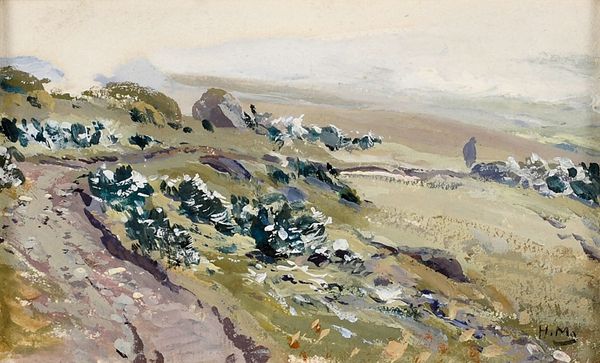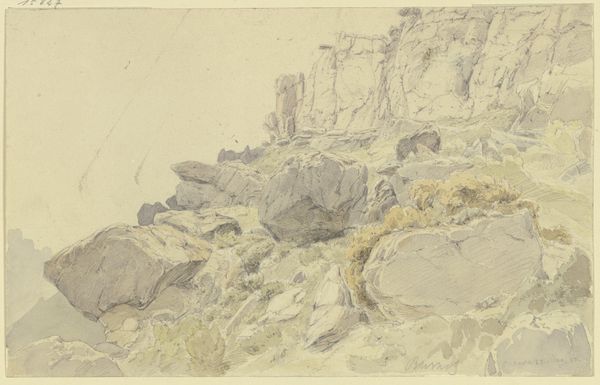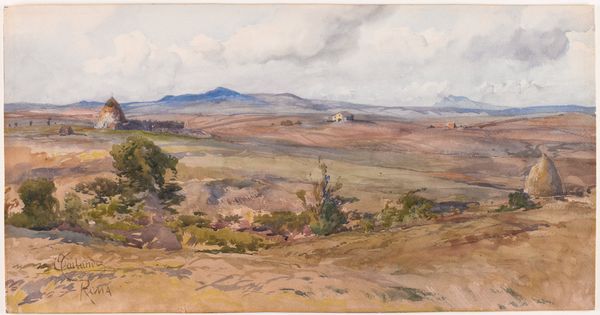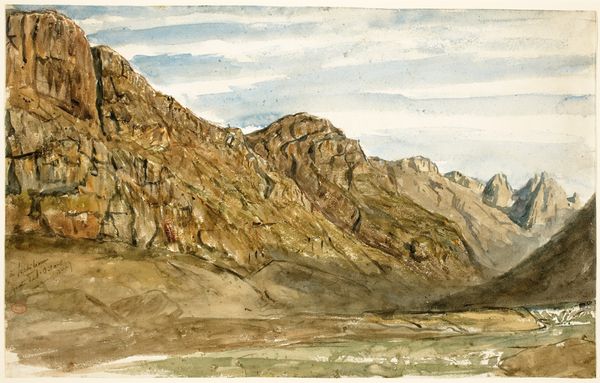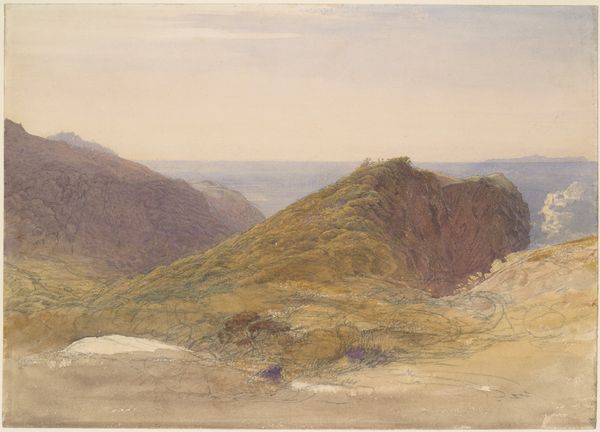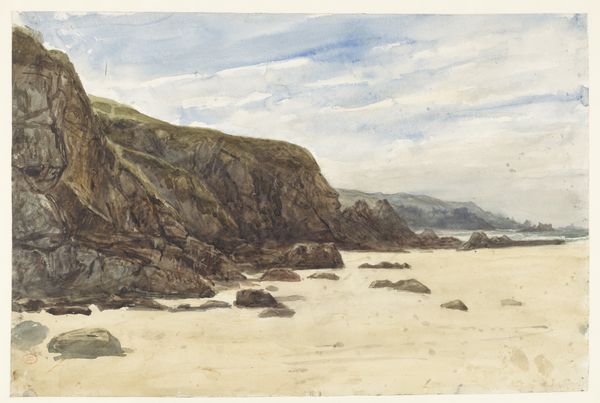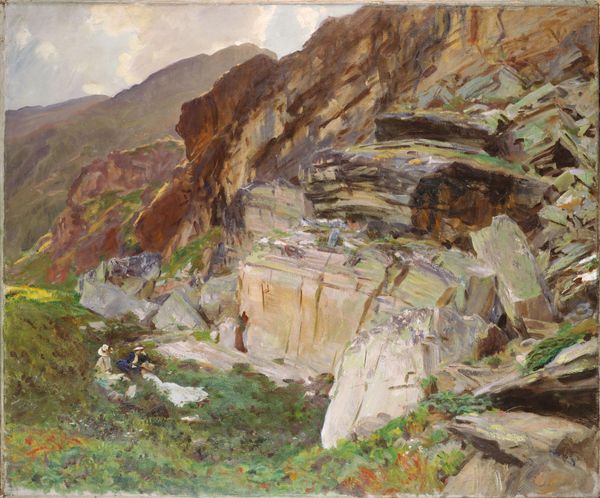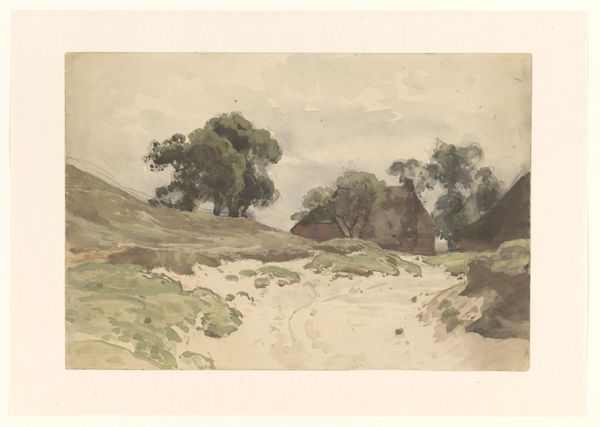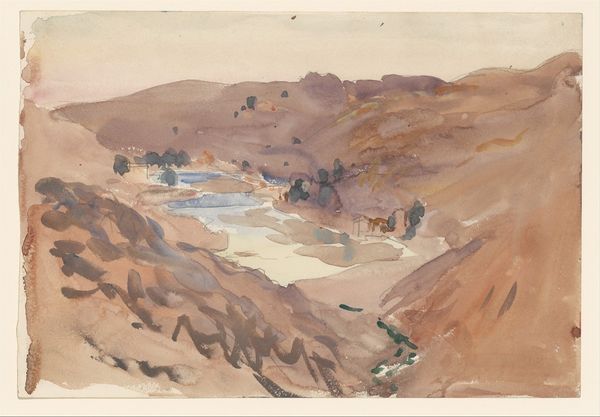
drawing, painting, plein-air, watercolor
#
drawing
#
water colours
#
painting
#
impressionism
#
plein-air
#
landscape
#
oil painting
#
watercolor
#
united-states
#
realism
Dimensions: 13 3/8 x 19 1/2 in. (33.97 x 49.53 cm) (sight)28 1/8 x 34 in. (71.44 x 86.36 cm) (outer frame)
Copyright: Public Domain
Curator: Standing before us is "Shore Scene," a watercolor and drawing attributed to Samuel Peter Rolt Triscott, likely created sometime in the late 19th or early 20th century. It’s part of the collection here at the Minneapolis Institute of Art. Editor: It's strikingly understated, isn’t it? The colors are muted, almost melancholic. It has a subdued beauty. I’m curious about Triscott's process; the visible brushstrokes and the layering of washes show the artist built up the scene carefully. Curator: Yes, and Triscott was known for working en plein air. This piece seems to exemplify that approach – capturing a fleeting moment and light, as was popular among Impressionists, but with a more realistic leaning, reflective of broader trends in American art during this period. This piece reflects artistic values upheld by institutions such as the Boston school. Editor: Exactly, it’s interesting how he balanced capturing a transient moment, but there’s that palpable feeling that Triscott spent time studying the material components of the landscape: the coarse textures of the rock, the bend of grass. Did the choice of watercolour encourage the style, as opposed to oils? Curator: The accessibility and portability of watercolors certainly democratized landscape painting. Working outdoors became easier, influencing subject and technique. The cultural fascination with landscapes also fuelled this surge. Editor: I hadn't thought of watercolor’s influence on landscape's cultural significance like that! How does knowing the piece would be relatively easy to produce effect our understanding of its position in museums such as this? Curator: Great question! Museums have historically shown bias, giving higher prominence to oil on canvas. This could potentially challenge traditional hierarchies around 'high art'. Presenting works like this within a prominent gallery shifts the conversation and our preconceived values of artwork. Editor: Looking at it through a lens of material, that is interesting indeed! To summarise, Triscott seems to have carefully studied these raw materials while on location and built a moment. I can feel both of our perspectives adding extra weight to such an easy to oversee piece. Curator: Yes, these intimate scenes provided accessible art experiences. Their popularity says much about middle-class aspirations for leisure and education in the late 19th and early 20th centuries, creating new cultural habits we still grapple with today.
Comments
No comments
Be the first to comment and join the conversation on the ultimate creative platform.

